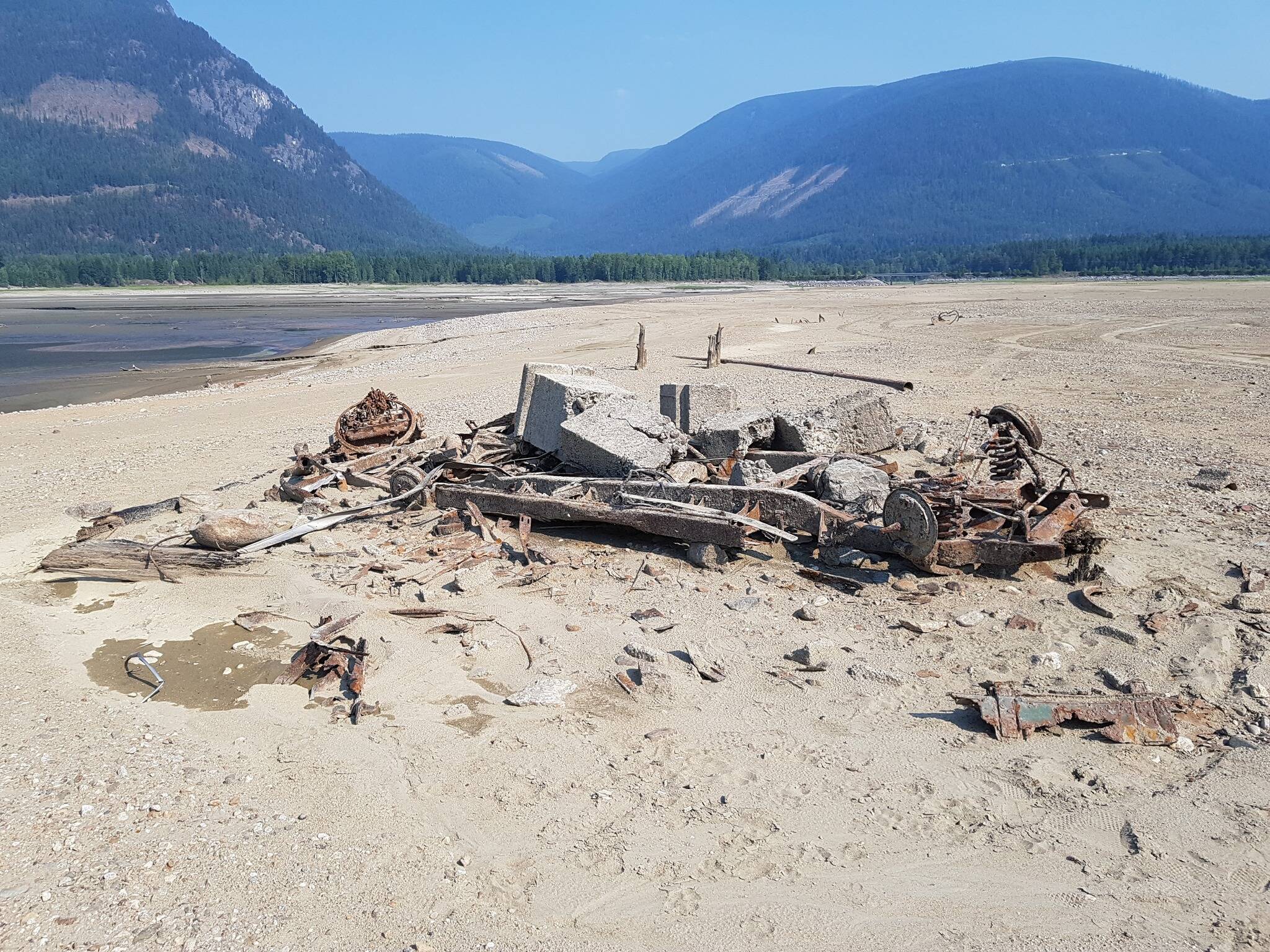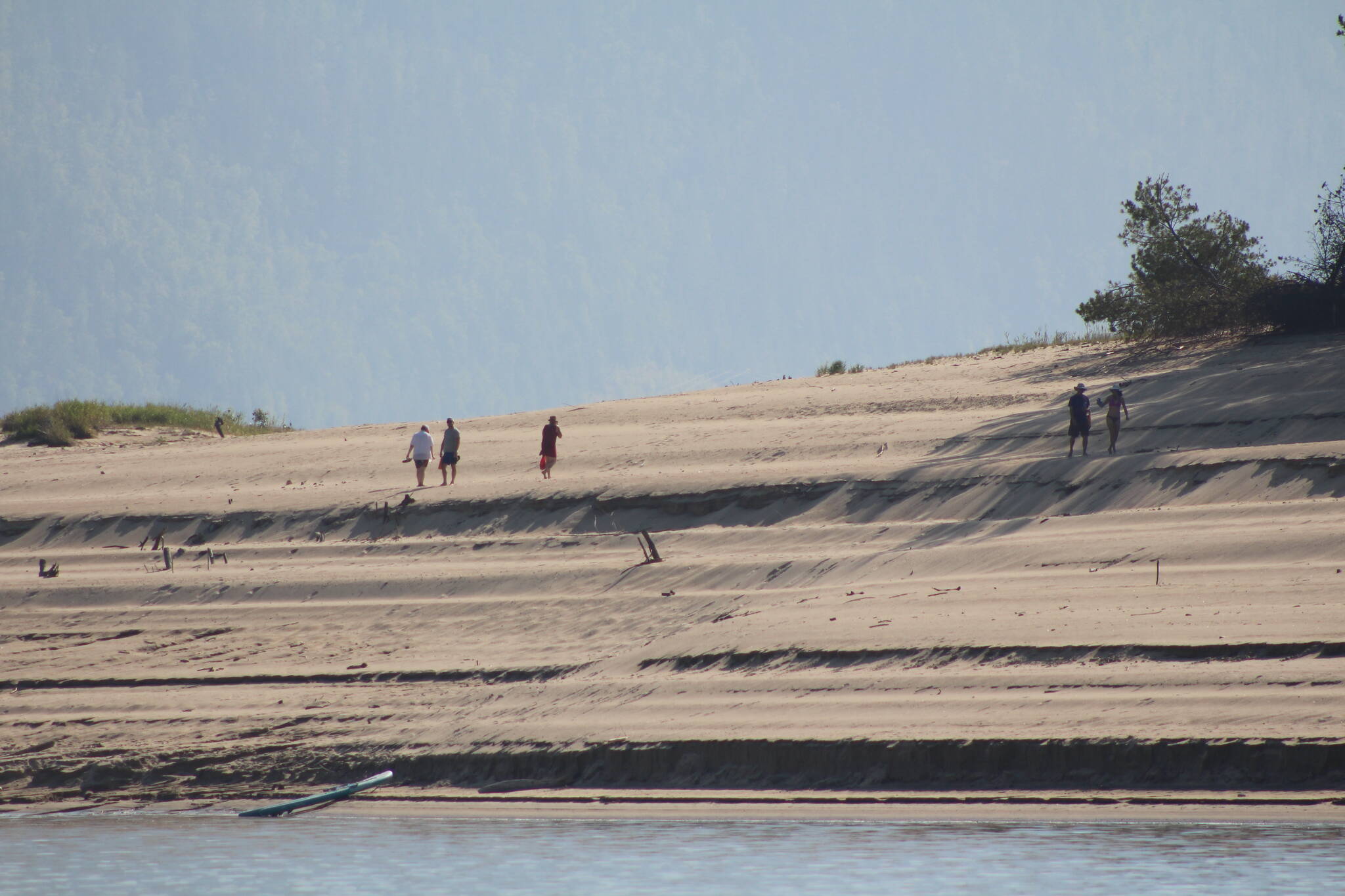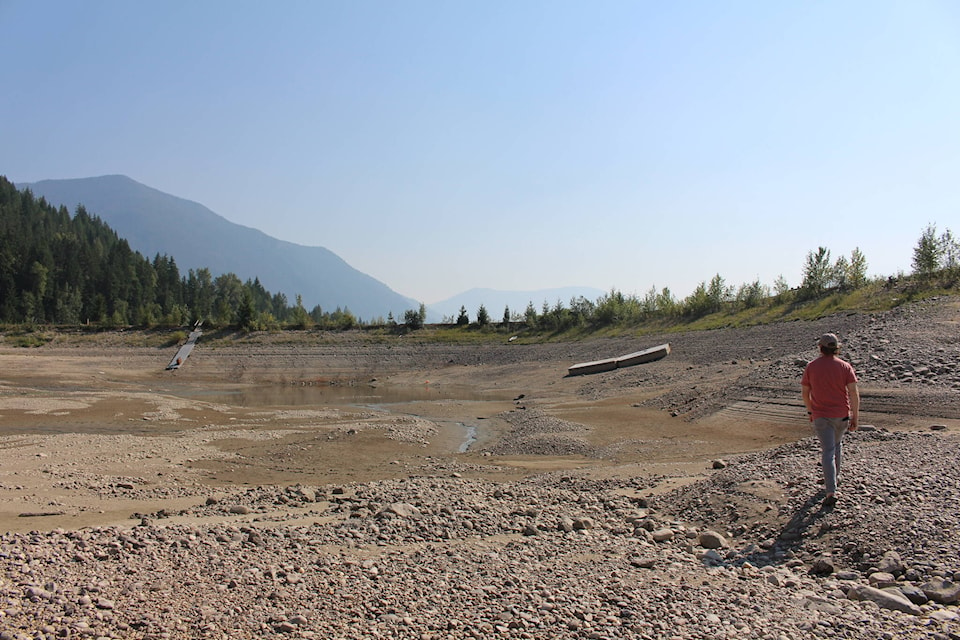The following was written as part of the latest edition of the Revelstoke TIMES magazine.
On Jan. 17, 1961, Canada prime minister John Diefenbaker and United States president Dwight Eisenhower signed the Columbia River Treaty – a groundbreaking coming together of the two nations that looked to mutually benefit from their bountiful natural resources.
In Canada, the hydroelectric dams are stewarded by BC Hydro.
At its core, the treaty is an agreement on the development and operation of four hydroelectric dams – three in Canada and one in the U.S. On the surface, these dams have benefited British Columbia financially.
But, what happens when we take a closer look at how residents who live on the Arrow Lakes are being affected by the dams today?
As a disclaimer, it would be irresponsible to dive into this topic without mentioning how the damming of the Columbia River affected First Nations people, and near Revelstoke specifically, the Sinixt people.
The Sinixt lived along the Columbia River for thousands of years before any pen was put to paper by politicians in the region, before an imaginary line was drawn on the land to signify which side is Canada and which are our neighbours.
The Sinixt were labelled extinct by the Canadian government in 1956, amidst a boom in the development of infrastructure throughout the province thanks to then B.C. premier W.A.C. Bennett. The Sinixt, who weren’t extinct at all, lost a lot in the damming of the Columbia River, and while we won’t be discussing the impacts they still feel in this article, we believe acknowledging their plight is important.
After pen was put to paper
The Government of B.C. admits that, by today’s standards, there was a lack of consultation with the Columbia River basin residents and First Nations when the Columbia River Treaty was negotiated, and many British Columbians had doubts about the location of the dams and the treaty itself.
Homes and businesses in the Arrow Lakes Valley were put to the torch by the B.C. government to make way for the floodwaters that would form behind the dams.
Low-lying communities like Beaton, Old Beaton, Arrow Park, Arrowhead, Comaplix and Renata were physically moved to higher ground, or in some cases burned down, to make way for the flooding.
Residents of Nakusp say that homes in Arrow Park were burned to the ground or buried, but that the water has never reached those heights, leading them to question why people were forced off their land in the first place.
When the water is low, residents are left to look on at the bones of long-lost communities, and beaches are made dangerous by the sharp, rusted remains of old sawmills, tractors and homes.
Ieneke Van Houten has lived in the Arrow Lakes area since 1970, just after the flooding of the valley happened, and knew a number of people who were displaced or lost property due to the flooding.
“Some of them never got over it,” said Van Houten.
Today
Black Press Media took a trip south, over the ferry, to Nakusp in August to hear from the people of Nakusp after they reached out to us to help have their voices heard.
A gathering was held at the gazebo near the waterfront on Aug. 28, and more than 30 residents of the Arrow Lakes were in attendance to voice their concerns.
At first glance, it’s not difficult to figure out why they’re upset. Ragged beaches stretch out for much longer than they should during the summer, unearthing debris, destitute buildings, and most alarmingly, dead fish. The people in the Arrow Lakes region are used to low water levels, but not this low during the summer. According to residents, they’re used to seeing these kinds of water levels in February, not August when their boats are still in the water.
According to BC Hydro, water levels in the Arrow Lakes Reservoir will continue to drop through September. They blame drought as a major factor for the water levels, adding that most of the Columbia River valley and Kootenay region are at maximum drought levels.

As of Sept. 7, Arrow Lakes Reservoir levels were 426.7 metres and may go as low as 422.1 metres by the end of September. The minimum level allowed is 420 metres.
Hydroelectric dams and the Columbia River Treaty are complicated issues, too complicated to be explained in one article. But, people on the Arrow Lakes are concerned, their livelihoods are being impacted, and they’re worried about what the future may hold.
“As the water level dropped, so did my heart,” said Nakusp resident Victoria Youmans.
Here are some of their voices.
Environmental impacts
Stan Chorey is a resident of the Arrow Lakes and owns property just north of Shelter Bay.
“Environmentally, I’m very concerned about the situation BC Hydro has created,” said Chorey.
Ecosystems along the Columbia River, like many ecosystems in a number of diverse habitats across the country, are interconnected – meaning the impacts on one specific species could and are being felt across a number of other species.
The impacts of the water levels on fish are then felt by lake birds, and changes in the growing habits of vegetation affect the habits of mammals along the river.
Residents in Nakusp have documented a number of pools where they have found dead fish, beached by a sudden and drastic shift in the water level.
Near Burton, Rachel Elliot photographed a number of white sturgeon that had perished in a small pool of water.
Chorey says that on a recent visit to Cartier Marsh, a wetland near Revelstoke which is usually full of life, he was shocked to find that the reptiles and turtles which filled the marsh had all died and that the marsh had become no more than a ‘big sandpile’.
“The impact of that lasts many years. It perpetuates,” said Chorey of the state in which he found Cartier Marsh.
Residents say the water levels were at levels normally seen in the dead of winter as early as July, which has had a severely negative impact on fish populations. They’re concerned about the migrating habits of salmon, and that the hard work being done at spawning pools in the region is going to waste.

Despite these concerns, BC Hydro says that fish stranding is ‘not uncommon’ and can happen ‘in any year’.
Economy and tourism
Bob Ruttenberg, a resident of Nakusp, said that he used to work retail in the community and reacted to the effect that the low water levels are having on the tourism economy.
“People aren’t gathering, they’re not coming, they don’t go to restaurants, they don’t go shopping, they don’t go to the stores, and there’s a wide impact,” said Ruttenberg.
Beyond the environmental impacts, the low water levels cause the shoreline to look like a serious eyesore, not only because of the eroding beaches but because of what the low water levels unearth.
By the second week of July, Ruttenberg says that not only did the beaches lose their natural beauty, but they became dangerous. You sink in the mud, you cut your feet on unearthed metal.
Ruttenberg says that most of his neighbours moved to Nakusp because of the access to the beach,
“This is killing us, from my point of view,” added Ruttenberg.
Rachel Elliot owns a campground near Burton. She says campers are showing up to her campground with long-term reservations, their boats in tow, and turning around leaving after just one night. The land they expected to see is completely different than what they’re arriving to find.
Elliot added that camping is one of the main economic draws for the Burton area – they rely on it.
Ruttenberg says that his neighbours have told him that they plan on leaving the region if things don’t change.
Property damage
Travis Hebb is the owner of Arrow Lakes Adventures in Nakusp, taking tourists around on tours of the usually beautiful Arrow Lakes on his boat: the Wildflower.
Throughout this summer, Hebb has watched on while the beaches on the Arrow Lakes have eroded past the point of being beautiful.
Residents in Nakusp say that some days, the water drops so quickly, that it causes major erosion to the shoreline, evident when viewed from a boat.
Many docks in Nakusp have gone completely dry, leaving people’s boats beached and damaged.
Hebb himself has put thousands of dollars into repairs to the Wildflower after running into unexpected debris at spots in the lake where the water level is the lowest.
On top of the obvious property damage, the character of properties on the shoreline has also drastically changed.
In some places, people who used to have lakefront property now have to walk more than a kilometre to touch the water – a far cry from the lake access they expected when they purchased their property.
What comes next
“Honesty and transparency,” said Rachel Elliot when asked what she wants from BC Hydro going forward.
Nakusp Mayor Tom Zeleznik is pushing for BC Hydro to open a dialogue with the residents of the Arrow Lakes so that their voices and experiences can be heard.
“Our community can live and survive without a Nakusp public beach, but we cannot continue to live with the ecological, and environmental damage that is happening daily to our (Arrow Lakes Reservoir),” said Zeleznik in a letter to BC Hydro.
Zeleznik added if the levels are going to reach a ‘new normal’, residents of the region should be allowed to use the exposed land, retaking some of what was lost back in the 1960s.
While BC Hydro has done some consultation with residents of the region, they don’t feel like their concerns are being addressed, or even that their questions are being answered.
“I really want them to be accountable and be transparent with what they’re doing, and give the people of this valley a clear and truthful answer about what’s going on,” said Stan Chorey.
Jesse Edwards, a resident of Nakusp, started the Facebook group Slow the Flow of Arrow Lakes.
The group, which was only started in mid-August of this year, has more than 2,600 members, some of whom post daily, sharing photos of their devastated properties, discussing the inequity they feel, and continuing the conversation so that, hopefully, their voices can be heard.
“I think, for a long time, the people in this valley have been ignored,” said Edwards.
The latest round of Columbia River Treaty talks between Canada and the United States concluded in August as both sides continued efforts to modernize the decades-old agreement.
“In your negotiations, listen to the people,” said resident Colleen Lakevold in a letter to BC Hydro.
“Compensate property owners for their land falling and crumbling into the Arrow (Lakes), for the loss of waterfront enjoyment, for the money spent to stabilize their properties. Compensate the property owners pre-flood.
“Listen to the towns and villages affected by the loss of tourism and enjoyment.
“Provide a safety net for our fisheries. Come and see our valley, talk to us, learn the history, do some research, watch some videos, and read some books about the damage done. And then maybe, just maybe, you can look at this treaty with your eyes wide open.”
“I know it’s going to be a tough battle, but anything worth fighting for is going to be a tough fight,” concluded Edwards.
READ MORE: Looking ahead to Revelstoke’s LUNA Fest
